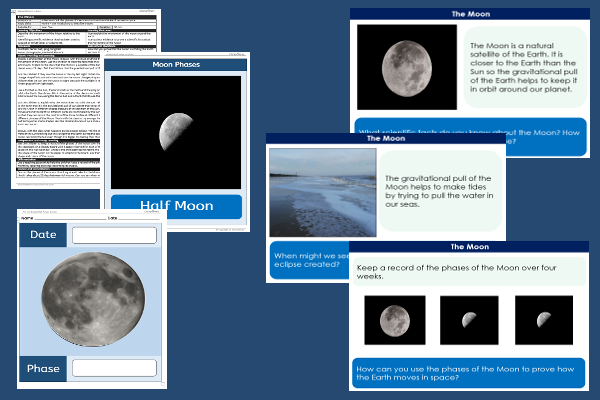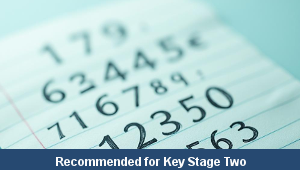Lesson Six – The Moon

This science teaching pack for Key Stage Two gets the children to investigate how to track and record each of the different phases of the Moon over a specific time period to show how the Earth moves in space.
The class can practise making a record of the shape of the Moon across a number of weeks to identify how it moves in space in relation to the Earth.
Download this teaching pack including a lesson plan, classroom activities and an interactive presentation to investigate how to track and record each of the different phases of the Moon over a specific time period to show how the Earth moves in space
Activities in this teaching pack include display posters to support understanding of the key facts and vocabulary about the phases of the Moon and its orbit around the Earth and a template to identify and record the different phases of the Moon over a period of one month.
The interactive presentation can be used to explore how to track and record the phases of the Moon over a specific time period to show how the Earth moves in space.
This lesson is part of a science scheme of work to get the children to describe the movement of the Earth, and other planets, relative to the Sun in the Solar System by using practical models and researching information. There are teaching activities for shared learning, differentiated worksheets to support independent learning and interactive presentations to introduce concepts and key skills.
-

Maths Arithmetic Assessment
Assess abilities in solving arithmetic number problems for addition, subtraction, multiplication and division when working with informal and formal written calculations
-

Environment
Identify and describe some of the special landscapes and locations that can be found in the world and reflect on how they can be protected and preserved for the future
-

Silent Letter Words
Explore and illustrate the meanings and spellings of some different words with silent letters when using them in a range of topics and scenarios
-

Complaint Letters
Explain and model how to format and structure writing when composing letters of complaint about different issues and scenarios
